Momentum Discussion
Here is an exercise that everyone should do. It’s taken from the Maneuvering a Sailboat Under Power course which gives 20 different exercises to be able to confidently maneuver a sailboat.
Exercise 1: Under power, and going down wind, move towards a marker or buoy and stop the boat with the buoy abeam of the boat. You’ll invariably overshoot. No problem though because you’re in deep water and nowhere near a marina.
What you learned: You overshot for two reasons the boat has a massive amount of momentum and the wind is pushing you from behind. To do it better next time, put the engine into reverse about 5 boat lengths back at about 1000 rpm. As the boat begins to slow, gauge whether you should increase the engine speed against the approaching speed of the buoy. Work the engine up to 2500 rpm and down to ensure you stop in the desired place. Most people make the mistake of putting the engine in reverse too late and then have to overpower the engine at the last minute.
Exercise 2: Repeat exercise 1 above but headed into wind.
What you learned: You still run the possibility of overshooting your mark largely again because of the momentum of the boat. The exact same principles apply. Use reverse with plenty of space and work the engine to gauge your approach.
The bottom line here is that the boat does not work very well in reverse. As another example – from stand still notice the acceleration of the boat in both forward and reverse. You’ll see that the boat takes off much faster in forward. Why, well that’s easy – because the propeller is mostly used in forward the shape of the prop is engineered to have its greatest efficiency in forward. The trade off is poor performance in reverse. However – enter the innovative reversing propeller.
If you liked this article, please Share it, Digg it or Tweet it below. It helps spread the word of NauticEd.


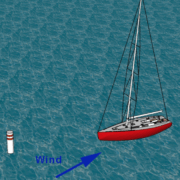
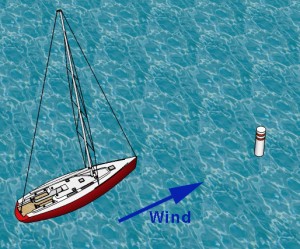
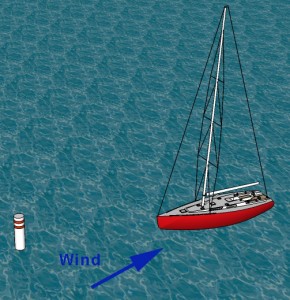
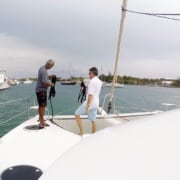

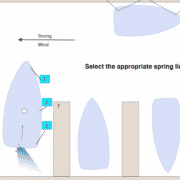
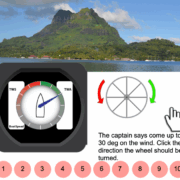



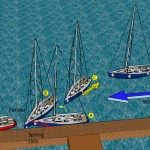
I’m not so sure I agree with the terminology you are using:
Basic Rules of Right of Way – The official 72 COLREGS are commonly referred to as the “Rules of the Road” or Navigation Rules. – No where in the entire book is the term “Right of Way” ever used.
It is the “Stand On” or “Give Way” vessel not the vessel with the “Right of Way”
Roger
Well, You are absolutely correct. The correct terminology would be free “rules of the road clinic” and we’d dive strait in with stand-on.
We definitely battled with this when writing the course because many people who visit us and search for us on google don’t know this terminology. Trying to google the rules on the water – we doubted if rules of the road was a good google and novice term. So we elected to go with rules of right of way and explain that right of way is stand on in the clinic rather than in the titles.
So thanks very much for your input. Much appreciated.